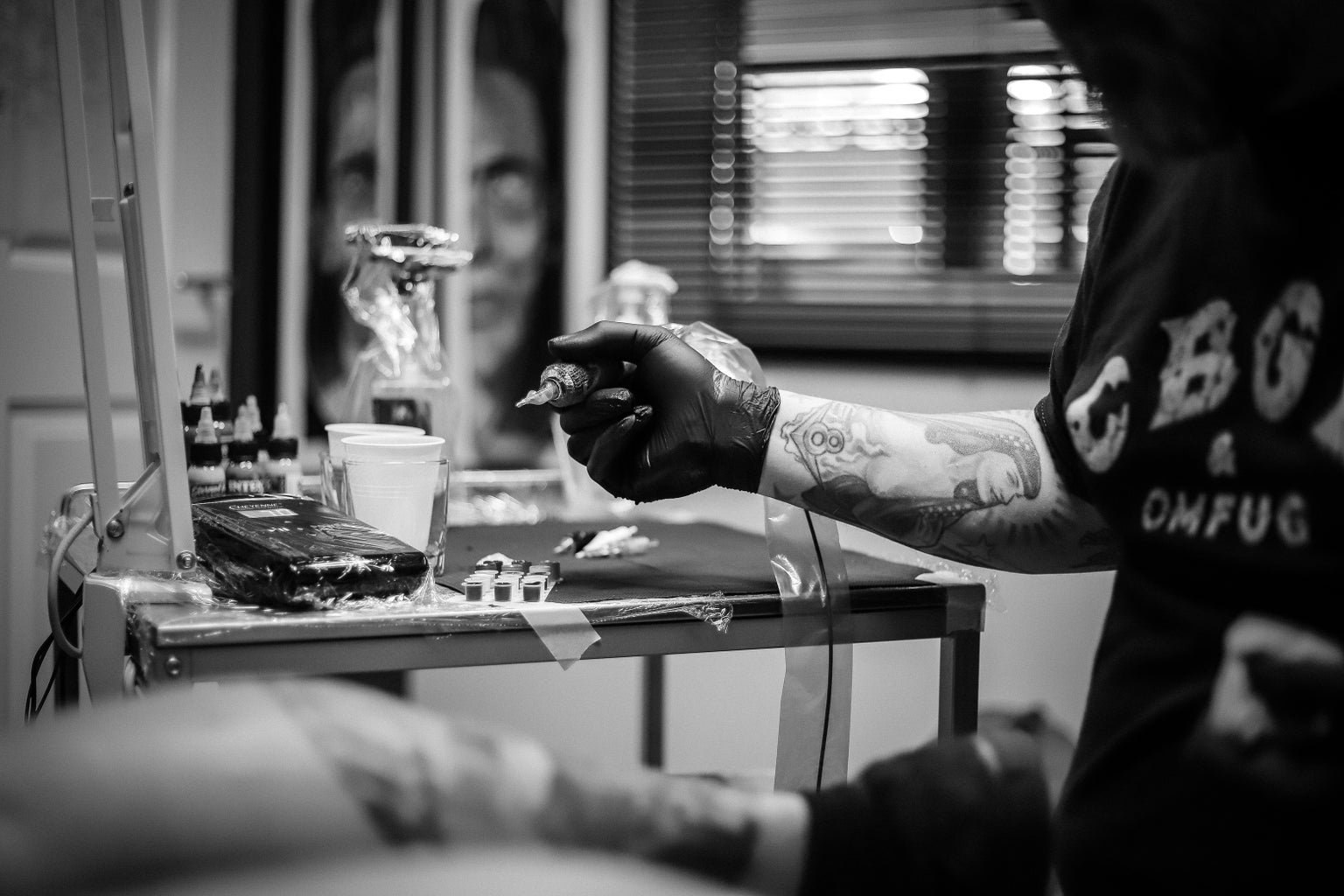For many people, the art of tattoos is a way to express their thoughts, dreams and desires. For others it is a motive for prejudice. But why and how did these evil eyes arise?
Tattoos have been around for millions of years, with many goals that along the way have been modified and resignified. The origin of the practice is dated, approximately, in 4000 b.C., with the Egyptians. As a form of adoration to the gods or the appreciation of beauty, it was almost exclusive to women. Amunet‘s mummy was found with tattoos in the abdominal region; the images may be related to fertility. Another mummy, Ötzi, was also found with markings, blue lines almost all over his body, which may have been made for therapeutic purposes, similar to acupuncture. There is also the possibility that the term tattoo arose from the marks and scars acquired during wars and battles of different peoples. The Maoris, natives of New Zealand, also tattooed themselves. They used to distinguish members of different social classes. Having your face tattooed was a source of great pride, it showed strength and power.
The prejudice and linkages to marginality began in the 20th century. Churches started to expel tattooed American sailors, because they were “a thing from the devil”. Because of this, tattoos were associated with religious practices and criminality.
Sailors were responsible for the popularization of tattoos in modernity, by visiting other nations and getting to know the practice, they started to tattoo themselves more frequently and brought the habit to their homeland. The tattoo gun was patented in 1891, in New York, by the Irish Samuel O’Reilly. At this time, tattoos were already established as a business, generally by former sailors. The most common images were anchors, boats and women, to depict part of their journeys, trips and love life. The polarization between sailors resulted in the creation of a law that prohibited images considered explicit and obcenes, in 1909.
Other representatives of lower social classes started to tattoo themselves and society’s reaction was to marginalize them. The images throughout the body were seen as marks of “inferior” lower classes and compared to civilizations considered archaic and savage. In the 1920’s, in a great portion of the USA, minors were forbidden to get tattoos. The prohibition was passed as public health reasons, with the goal to contain the proliferation of hepatitis and syphilis. So, tattoos became outlawed. In France, in the beginning of the 20th century, tattoos made up the look of juvenile delinquents and gang members. It was the symbol of those considered disorderly.
In Brazil, this art became popular in the mid 60’s, with the introduction of modern techniques and the tattoo gun, brought by the Danish Knud Harald Lykke Gregersen. Known as Lucky, he was a navy man and son of tattooists. He arrived in Brazil in 1959 and stayed until his death in 1983. In the 90’s, studios began to appear and tattooing took on a commercial space. The first tattoo shop, along the lines of the American and European ones, only appeared in Rio de Janeiro in 1980, in the neighborhood of Ipanema. The commercial character attracted new audiences.
Currently, tattooing is increasingly accepted by society, but there is still resistance from some institutions. In an interview with the Madrid newspaper AS, Arón Canet, a Spanish pilot, confessed to suffering discrimination for having his body tattooed, companies have already stopped signing contracts because of his looks. And he wasn’t the only one, the Brazilian Professor Gibran Dias Paes de Freitas, from the state network of Mato Grosso, was prevented from participating in the process of assigning classes in January 2021. Such discrimination generated a lawsuit filed by the Union of Workers in Public Education of Mato Grosso (Sintep-MT ), against the state government. The judge in the case considered “the lack of reasonableness of the restriction directed at the candidate of a public function for the simple fact of having a tattoo, beard and earrings, a blatantly discriminatory measure and lacking any rational justification to support it”.
There’s still a long way to go
In an interview, the tattoo artist Mariana Silenzi said that the contemporary world is more accepting of body modification if it is not extreme. “I have a tattooed face, so it is common for it to cause some strangeness or draw attention, but nothing that serious, but I am not in the formal job market. I don’t know if I would be accepted if I went back to conventional job interviews”, she explained. The tattoo artist, who entered the business in 2013 with the encouragement of her husband, says that there has been progress in the acceptance of tattooed people, but it is not uncommon for clients to tattoo in more hidden places, “exactly out of fear of this conservatism”.
According to a survey on the behavior of Brazilian tattooed people, carried out by Tattoo2me in March 2018, with 5.390 people, 57,96% of respondents reported having suffered some kind of prejudice for having tattoos. Of these, 22,26% suffered prejudice at work. Tattoo is not a reason for dismissal, it is not on the list of reasons for termination for just cause, of the article 482 of the CLT (Consolidation of Labor Laws). Furthermore, the law No. 9.029, of 1995, prohibits discrimination against tattooed and pierced people in the workplace.
To Sebrae (Brazilian Service to Support Micro and Small Businesses), in a study carried out between January 2016 and 2017, there was a 24,1% increase in the number of open studios across the country. Mariana Silenzi sees the advancement of women in the market, which is mostly male. “I believe that we are advancing little by little and gaining more space. The last 10 years have been very revolutionary for tattooing as a profession and I am sure we will go even further.”
————————————————–
The article above was edited by Amanda Moraes.
Liked this type of content? Check out Her Campus Cásper Líbero home page for more!



